Wintertime: The Best Time to Start Growing Native Plants from Seed
Looking out at the winter landscape, what's a gardener to do? Begin to dream of spring, of course! It's time to plan for more flowering plants to entice butterflies (and moths!) to your gardens for nectar, along with different native plants to provide food for caterpillars. You can be well on your way to a garden upgrade by starting your plants from seed, and winter is the best time to do it.
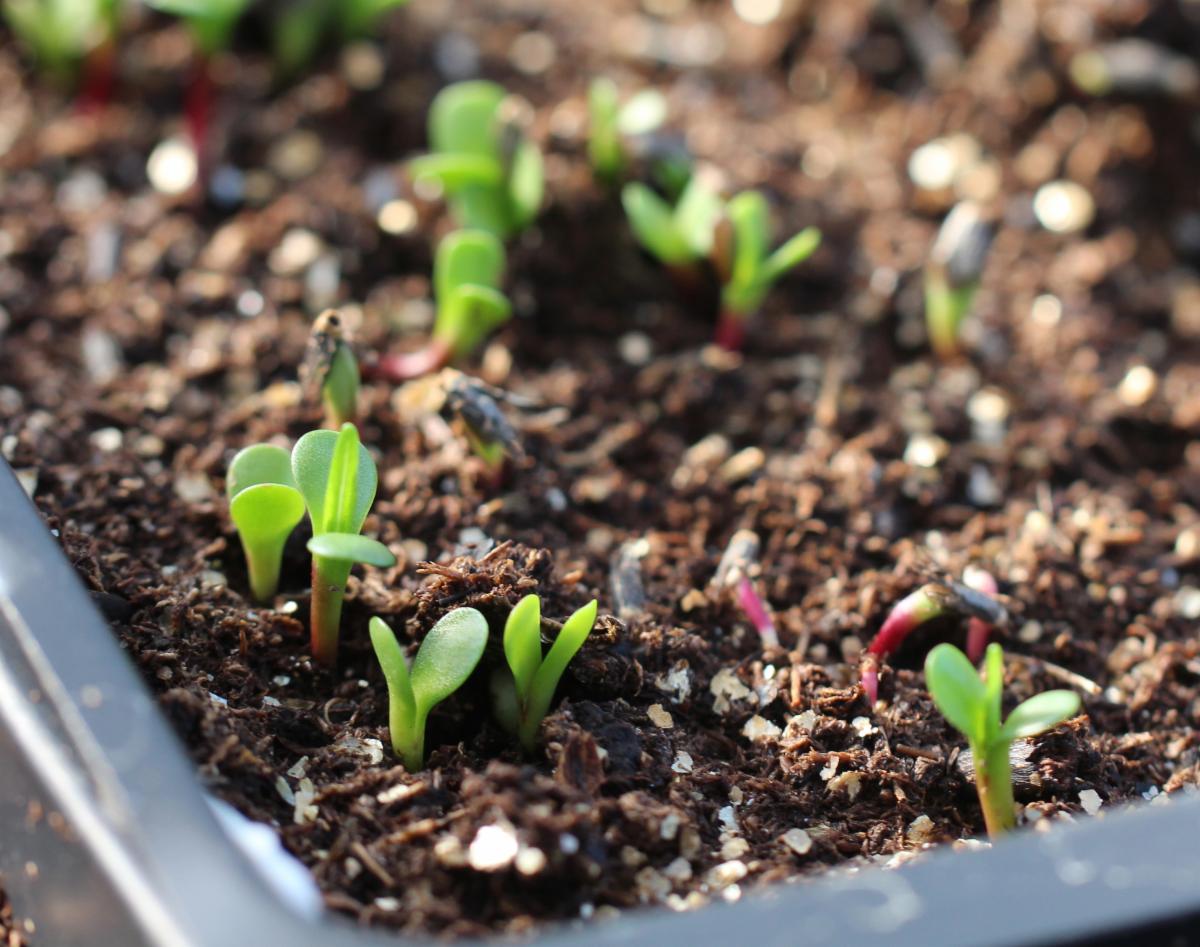
Starting plants from seed can also be wonderfully rewarding! These seedlings are Dense Blazing Star (Liatris spicata).
Propagating plants from seed is fun and economical, but also sometimes challenging. It's important not to wait too long to get started. You see, the seeds of many native plants require pretreatment that may take weeks to months--which makes winter a great time to begin. Success will depend upon understanding what each species of seed needs in order to grow.
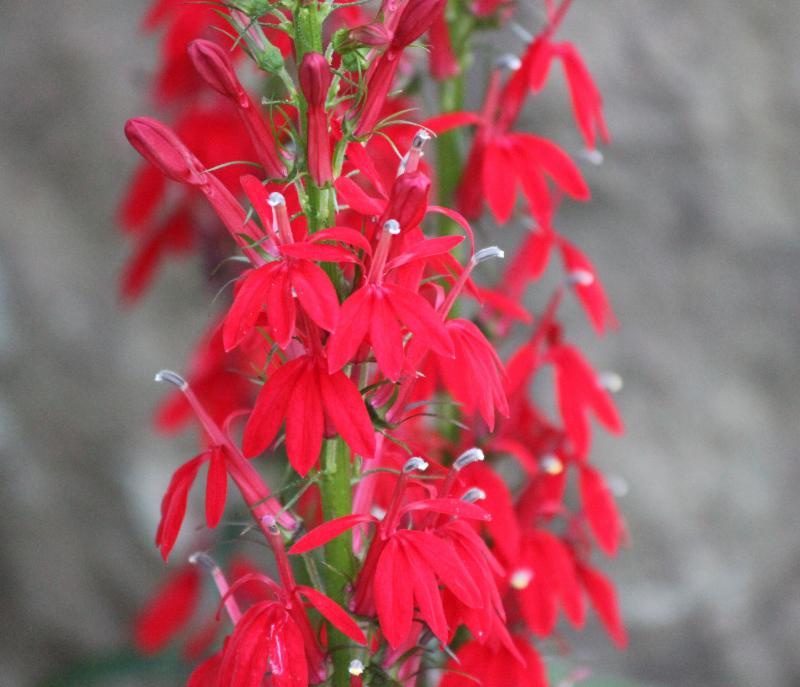
Cardinal Flower (Lobelia cardinalis) seeds are very tiny, so it's very important to surface-sow, and in fact it can be useful to mix them with a little clean sand before spreading them to help distribute them evenly.
How deep do I plant my seeds?
In general, seeds should be planted no deeper than the thickness of the seed itself. Many native plant seeds are extremely tiny and can easily be buried too deep. "Surface sowing"-simply dropping the seeds onto bare soil-and then pressing the seeds onto the surface of the soil, is the best approach for tiny seeds. It is very important for seeds to have good contact with the soil.
What is cold stratification?
Many native plant seeds require a period of cold stratification before they will grow. This means the seeds need to experience conditions that mimic winter in the ground, so the seeds must be in contact with a moist, cool substrate (sphagnum, soil, etc.) during this time. Without cold stratification, many seeds will stubbornly refuse to germinate. In the wild, this strategy actually protects the seeds from starting to grow at the wrong time of year.
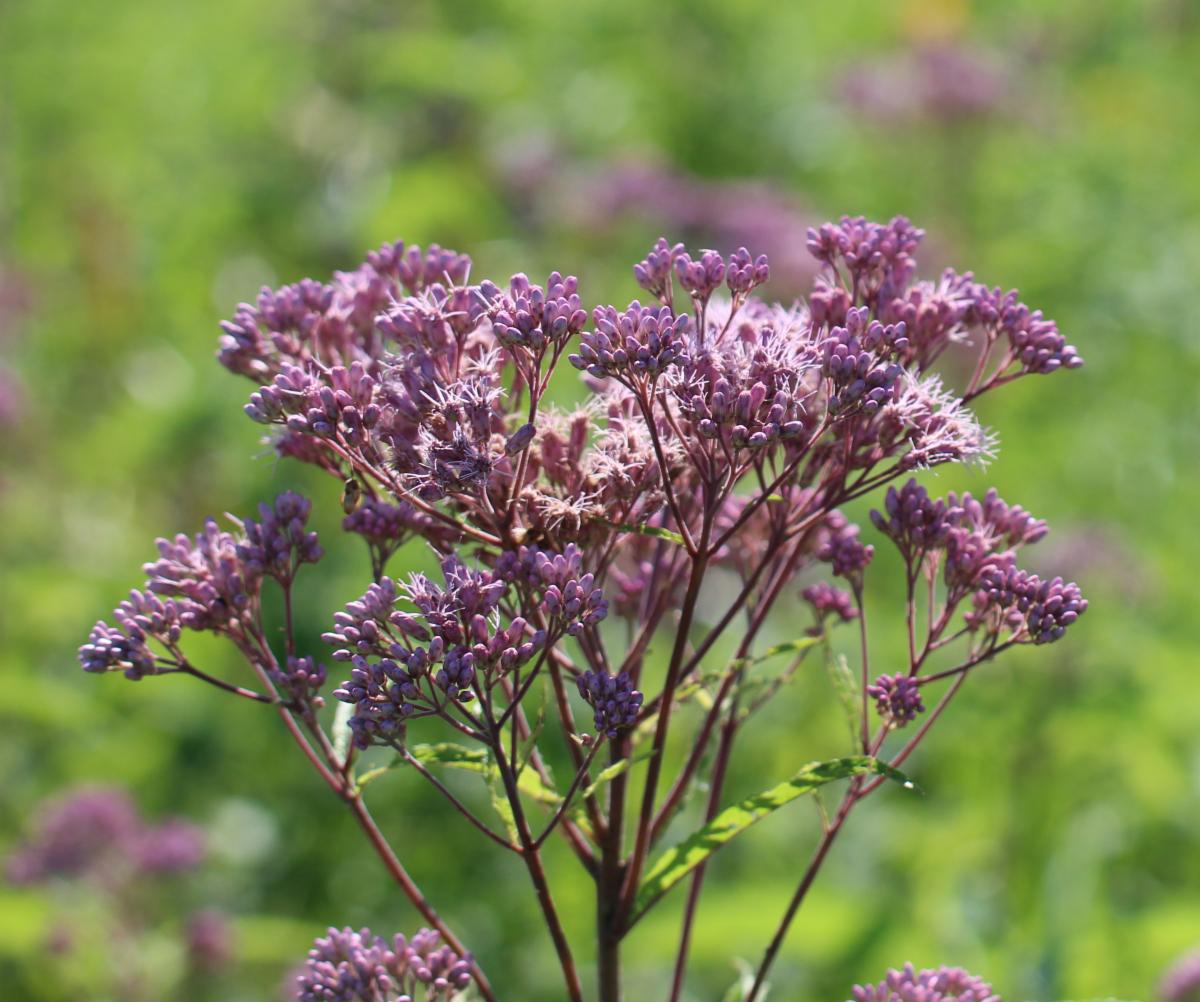
Spotted Joe Pye Weed (Eutrochium maculatum) seeds require at least eight weeks of cold stratification, so make sure you start early!
To complicate things, different species have different cold-stratification needs (a minimum of 4 weeks, 8 weeks, 12 weeks or more). Of course, if your seeds require cold stratification, one of the easiest ways to grow them is to plant directly outdoors and allow Mother Nature to take over. If you are cold-stratifying your seed indoors, it is also quite easy-simply plant your seed in a well-labeled pot of moist (not wet) soil, cover with a plastic bag, and put the whole thing in the back of your refrigerator for the prescribed number of weeks, before moving it back to a warm, bright location. You can also stratify your seeds in a protected location such as an unheated garage or porch (but be sure to protect them from mice, pets, and other creatures).
What about moisture and light?
When starting seeds indoors or outdoors, it's important to remember that the most dangerous time in the life of any plant is just as the seed begins to grow. If tiny seedlings with minuscule roots dry out, they have no defense and will simply die. If they are too wet, they will rot. Indoors, the use of clear domes over seed pots can be very helpful to keep the air and soil moist. Supplemental light is also very important indoors-long days (12-16 hrs.), with the light source only inches away from your seedlings, will encourage stout, healthy growth. Outdoors, keeping an eye on your newly seeded wildflower beds in spring to make sure that they don't get overly dry is also very important.
Let's look at a few favorite groups of native plants and how to propagate them from seed.
Milkweeds (Asclepias spp.)
If you find milkweeds, the storied host plants of Monarchs (Danaus plexippus), hard to grow from seed, you are not alone. In truth, they are quite easy-but knowing a few tricks will greatly increase your success rate. First, most milkweed seeds need a minimum of about 4 weeks of cold stratification. Second, they may look like large seeds but don't be fooled by that: milkweed seeds need light to germinate-if you bury them too deeply, they will never grow. Third, milkweed plants don't really like to grow in pots.
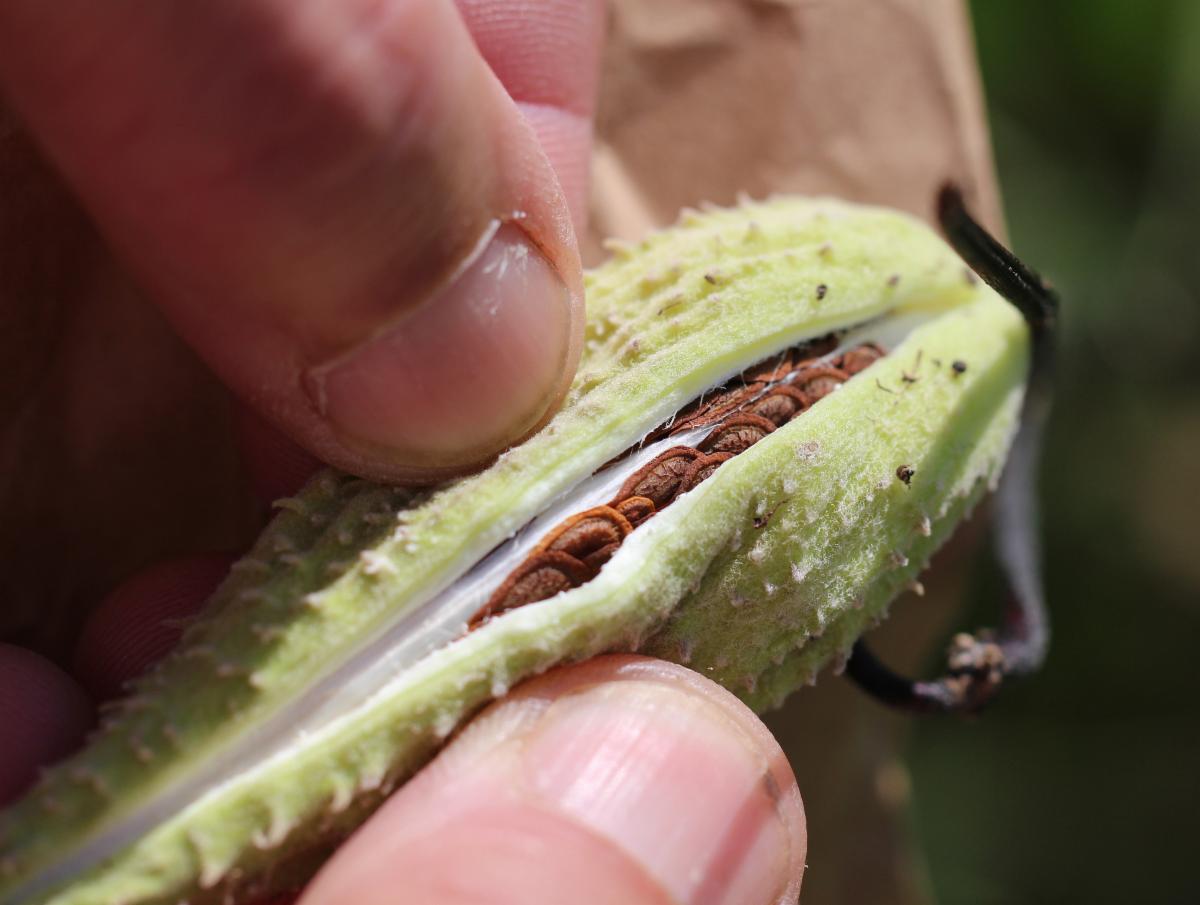
Common Milkweed (Asclepias syriaca) seeds ready to harvest in fall.
Their large roots need space to spread down and out, so they are actually best seeded directly into the garden. Failing that, plan to transplant your milkweeds into the garden when they are still quite young. Bear in mind that some milkweeds experience pronounced transplant shock-Butterfly Milkweed (Asclepias tuberosa) will stop growing for several weeks after transplant. Fourth, you will need patience with some milkweeds. Although Swamp Milkweed (Asclepias incarnata) started from seed will grow quite large the first year, others are not so fast, and some-like Butterfly Milkweed-stay quite small the first year and, like many perennials, may take several years to reach mature size.
Wild Indigo (Baptisia spp.) & Senna (Senna spp.)
The large seeds of these plants, host to Wild Indigo Duskywings (Erynnis baptisiae) and Sleepy Oranges (Eurema nicippe), respectively, germinate quite quickly after their dormancy is broken with a hot-water treatment. Just pour hot (not boiling) water over the seeds and let them soak overnight before planting. As with most Pea family members, adding a pinch of garden soil (from where you grow peas or beans in your garden) will inoculate the potting soil with Rhizobium, a beneficial symbiotic bacteria that these plants use to create nitrogen 'fixing' nodules on their roots, necessary to create the nutrients these plants require.
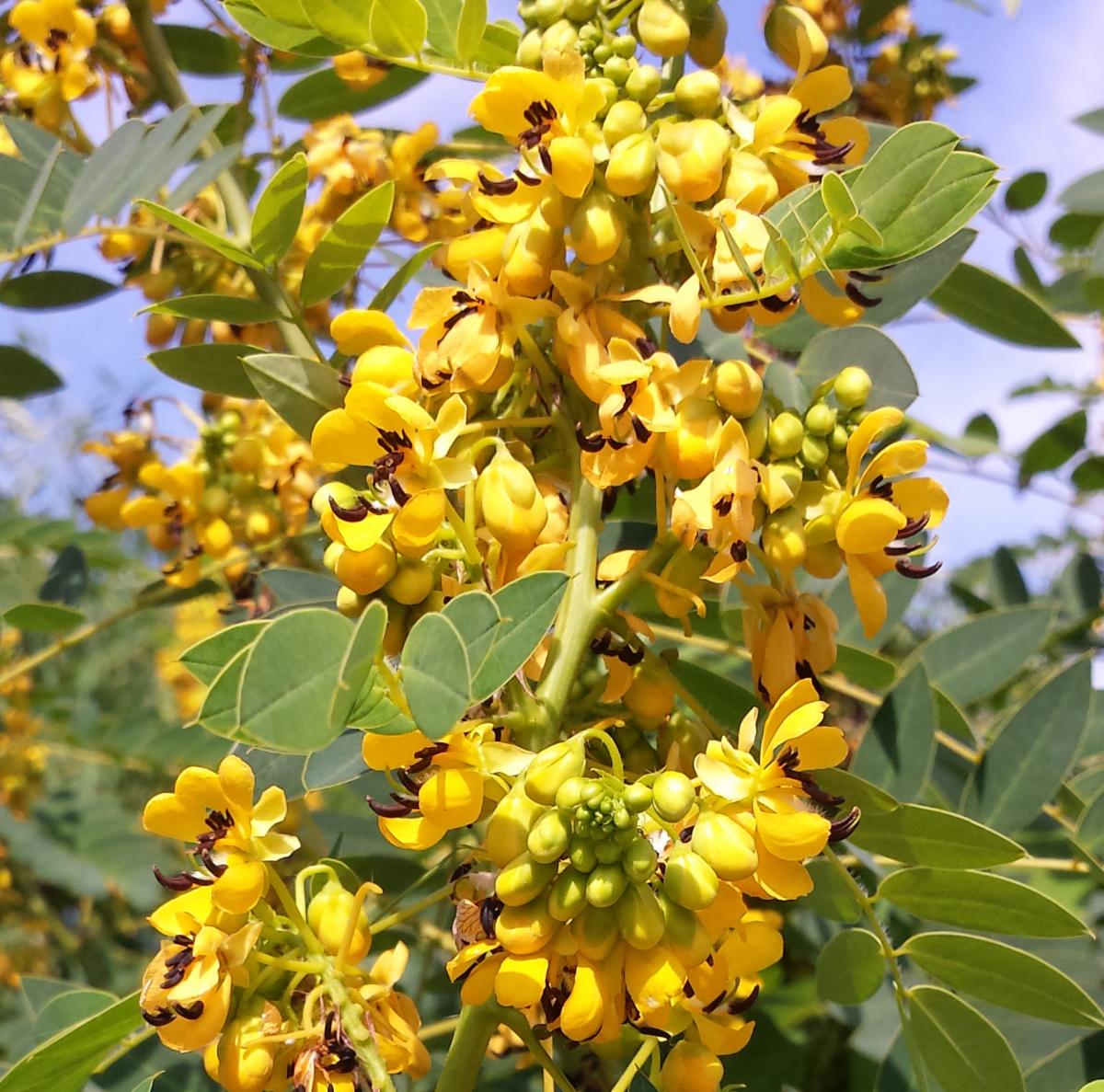
Maryland Senna (Senna marilandica) is a bold, beautiful plant that pollinators love, and it's easy to start from seed!
Coneflower (Echinacea spp.) & Blazing Star (Liatris spp.)
These outstanding nectar plants also require at least eight weeks of cold stratification. Their seed is large enough that covering the seed with about 1/8" of soil works best. Additionally, Blazing Star species germinate best when exposed to fluctuating temperatures (mimicking spring) after the cold stratification period is over. An unheated greenhouse or garage (with lights, of course), works very well for this.
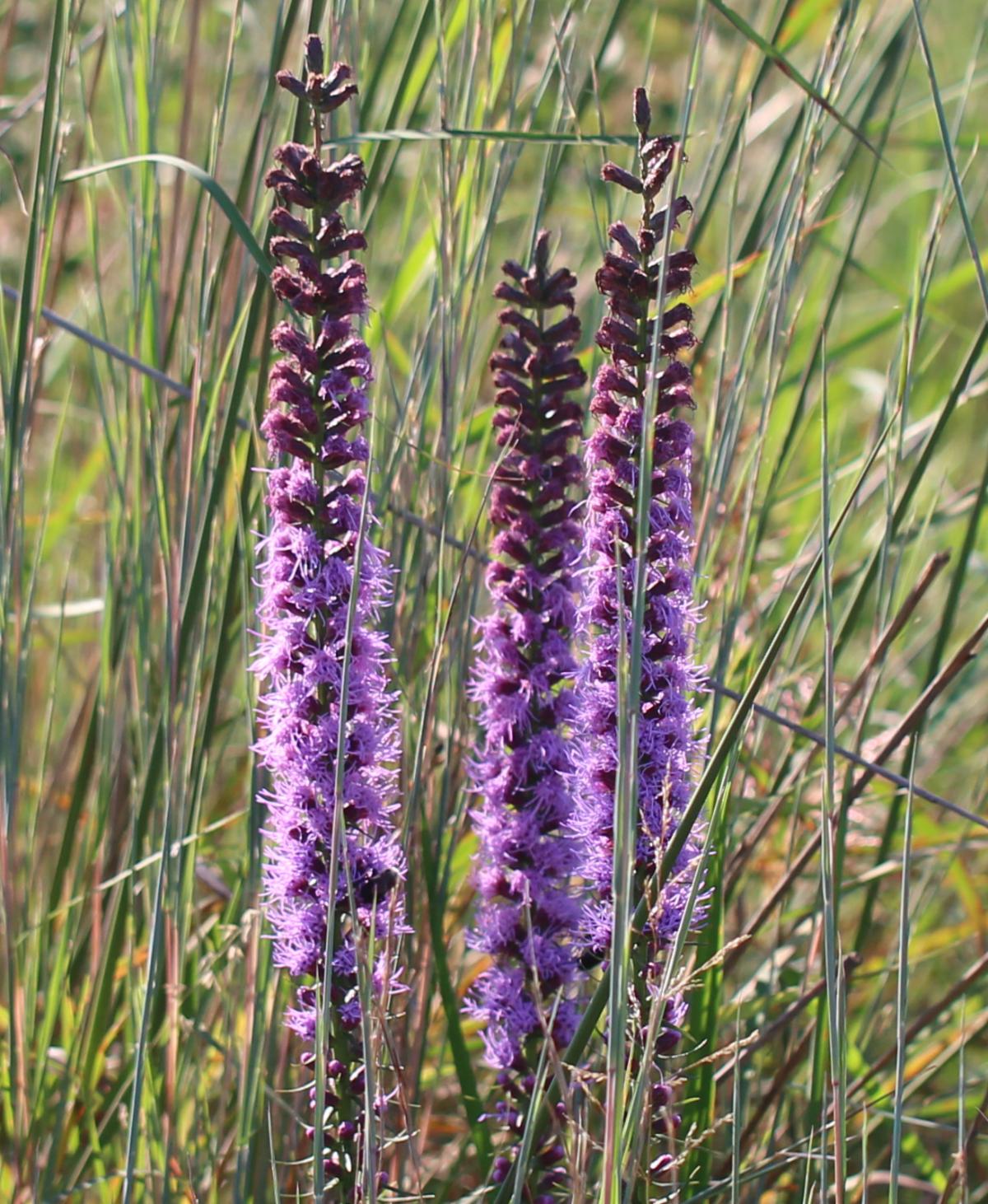
Dense Blazing Star (Liatris spicata) is a show-stopper, and another species that's fairly easy from seed...in fact you may recognize it as the seedlings pictured at the top of this blog!
Asters (Eurybia, Symphyotrichum, Doellingeria spp.) Goldenrods (Euthamia and Solidago spp.) Joe Pye Weeds (Eupatorium and Eutrochium spp.)
Although these excellent nectar and butterfly or moth caterpillar food plants are easy to grow from seed, the important thing to remember is that most of them require at least eight weeks of cold stratification. Also, since the seeds are very small, surface sowing is very important.
So Have Fun!
Of course, this is just an introduction to the fun of growing native plants from seed. At the end of the day just remember to always follow the directions that come with the seeds, and take heart--seeds want to grow! This is, after all, what they are for. Have fun, and happy planting!
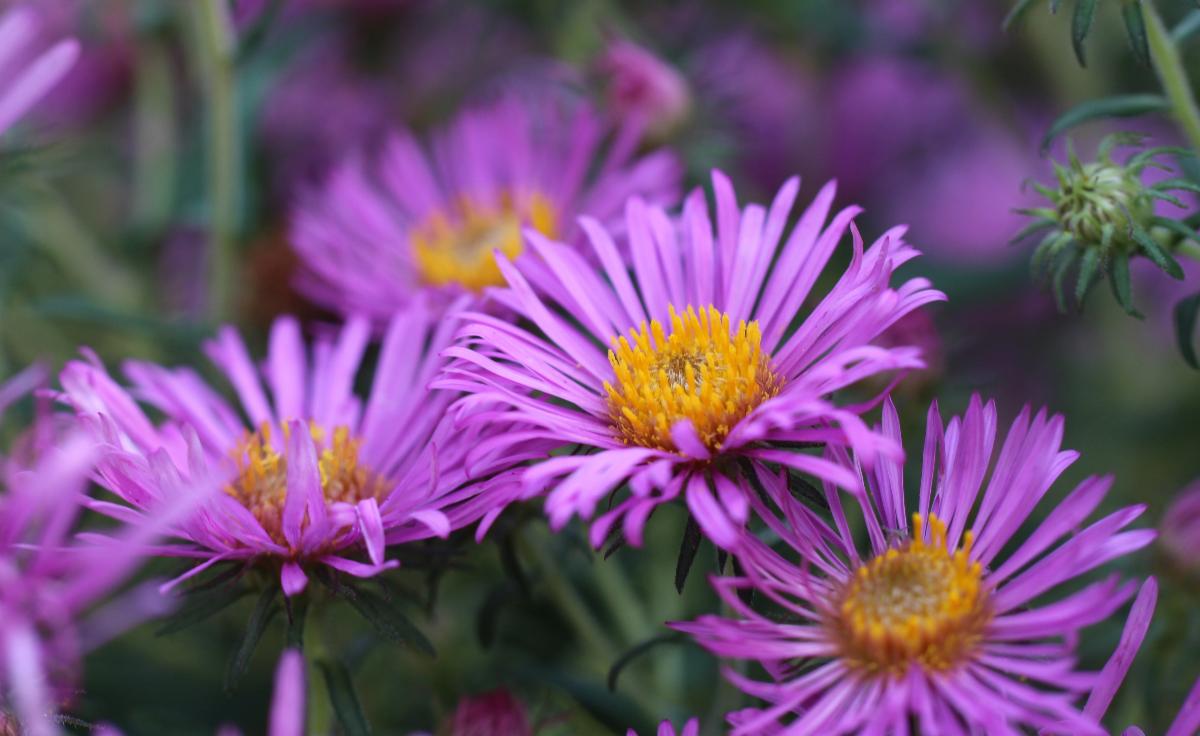
Asters flowers are beautiful, and they support late-season pollinators: what's not to like! These flowers are New England Aster (Symphyotrichum novae-angliae)
This article and some of these pictures first appeared in the North American Butterfly Association Butterfly Gardener Magazine Volume 25, Issue 4, Winter 2020

Randi V.W. Eckel, PhD
